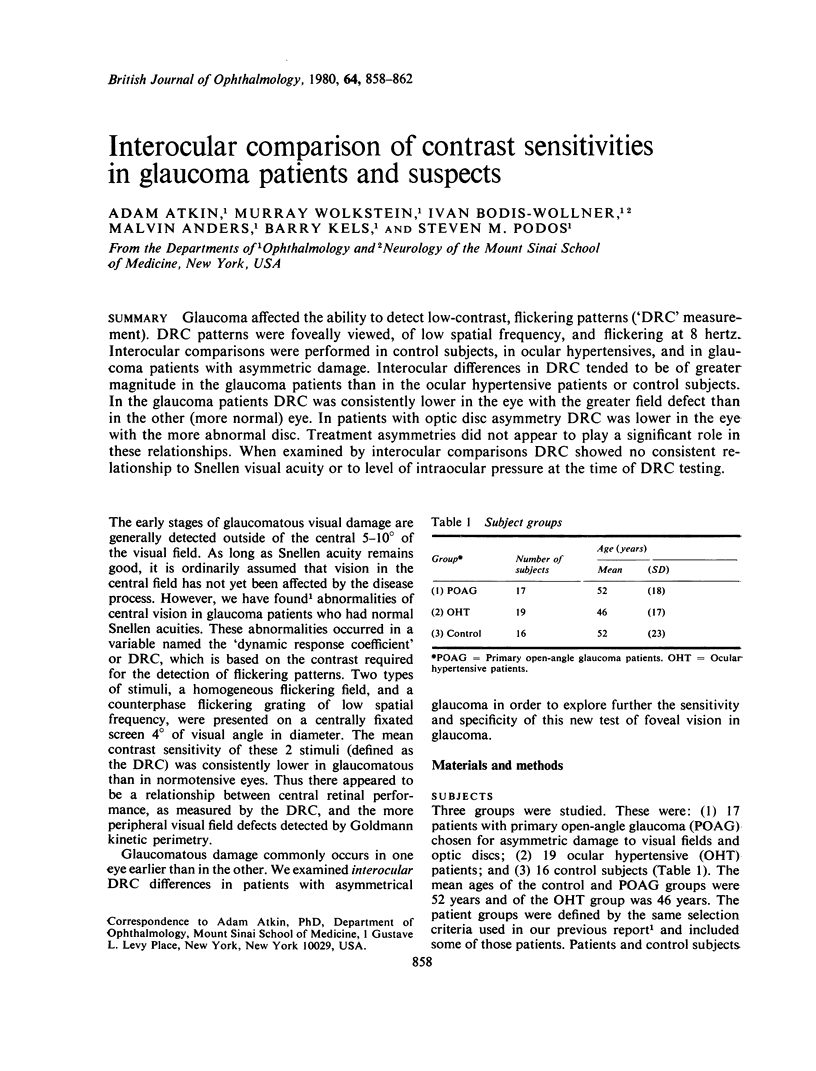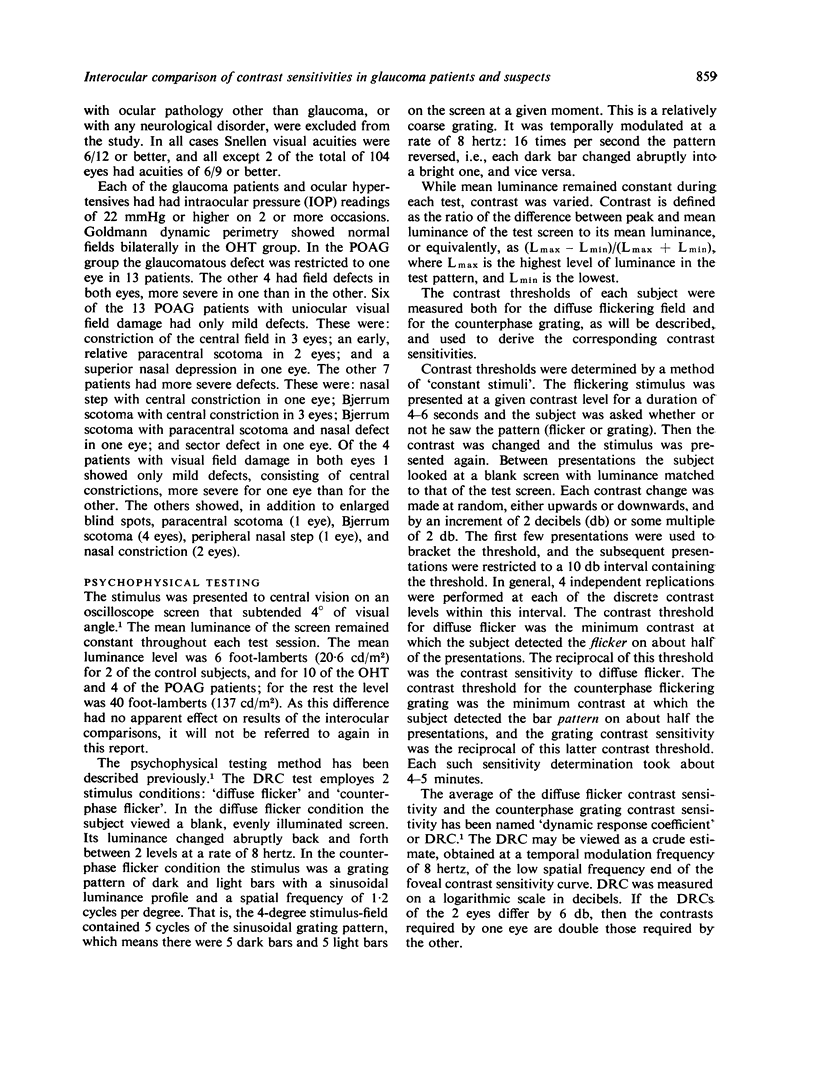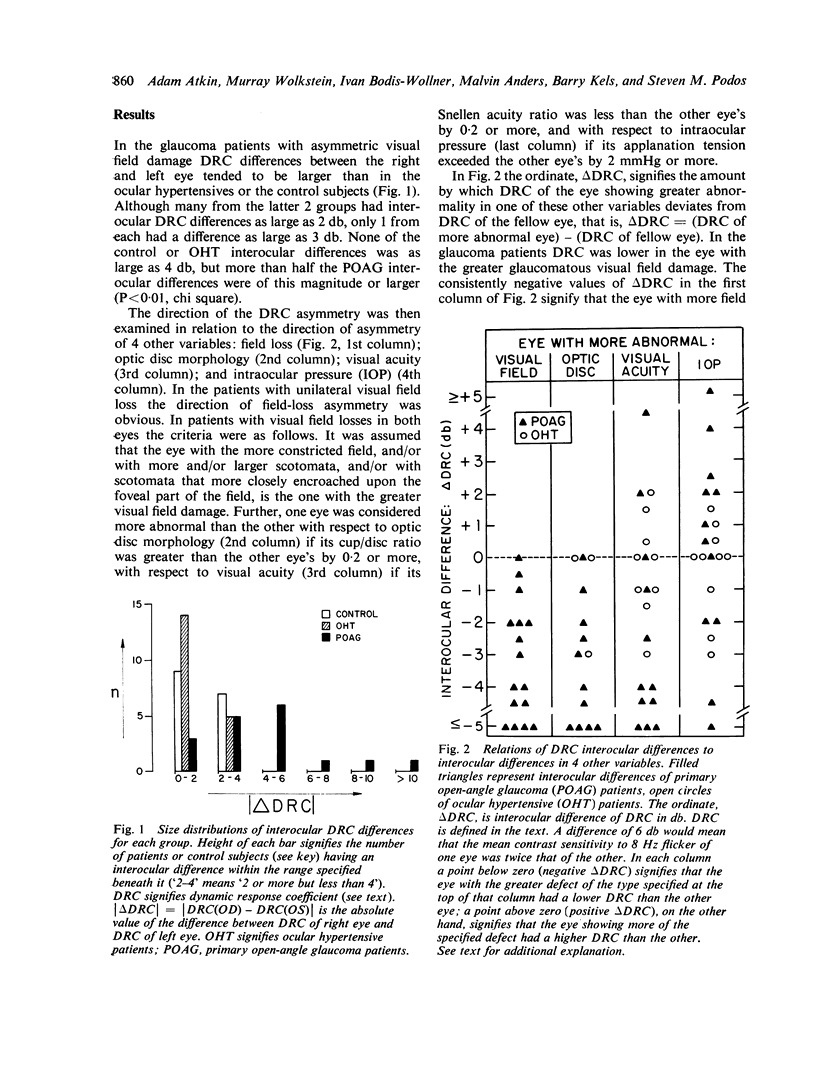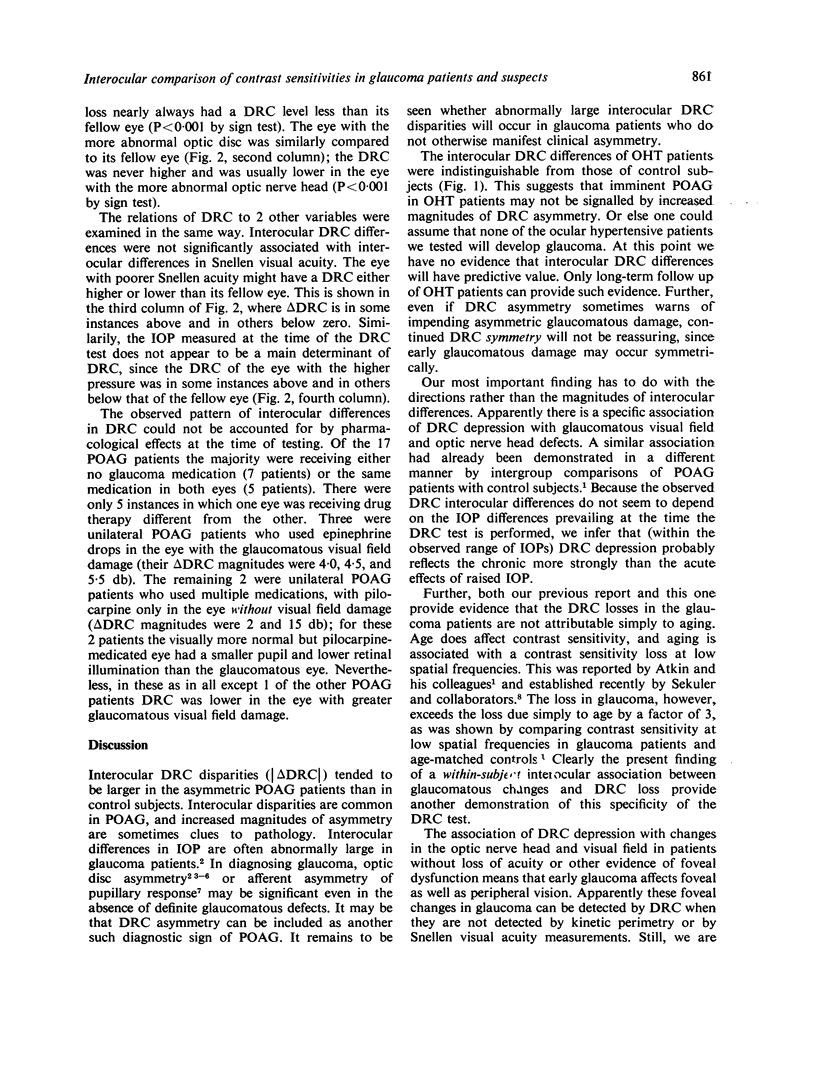Abstract
Glaucoma affected the ability to detect low-contrast, flickering patterns ('DRC' measurement). DRC patterns were foveally viewed, of low spatial frequency, and flickering at 8 hertz. Interocular comparisons were performed in control subjects, in ocular hypertensives, and in glaucoma patients with asymmetric damage. Interocular differences in DRC tended to be of greater magnitude in the glaucoma patients than in the ocular hypertensive patients or control subjects. In the glaucoma patients DRC was consistently lower in the eye with the greater field defect than in the other (more normal) eye. In patients with optic disc asymmetry DRC was lower in the eye with the more abnormal disc. Treatment asymmetries did not appear to play a significant role in these relationships. When examined by interocular comparisons DRC showed no consistent relationship to Snellen visual acuity or to level of intraocular pressure at the time of DRC testing.
Full text
PDF




Selected References
These references are in PubMed. This may not be the complete list of references from this article.
- Armaly M. F. Cup-disc ratio in early open-angle glaucoma. Doc Ophthalmol. 1969;26:526–533. doi: 10.1007/BF00944008. [DOI] [PubMed] [Google Scholar]
- Atkin A., Bodis-Wollner I., Wolkstein M., Moss A., Podos S. M. Abnormalities of central contrast sensitivity in glaucoma. Am J Ophthalmol. 1979 Aug;88(2):205–211. doi: 10.1016/0002-9394(79)90467-7. [DOI] [PubMed] [Google Scholar]
- Fishman R. S. Optic disc asymmetry. A sign of ocular hypertension. Arch Ophthalmol. 1970 Nov;84(5):590–594. doi: 10.1001/archopht.1970.00990040592006. [DOI] [PubMed] [Google Scholar]
- Kohn A. N., Moss A. P., Podos S. M. Relative afferent pupillary defects in glaucoma without characteristic field loss. Arch Ophthalmol. 1979 Feb;97(2):294–296. doi: 10.1001/archopht.1979.01020010146010. [DOI] [PubMed] [Google Scholar]


